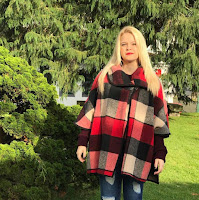Horses are my true passion, with you every month a new learning, a new discovery on the fantastic horses.
 |
| Mariana Travassos |
Many people confess their admiration for these magnificent horses, for having a rare and wonderful color. They call them the horses of the kings, for they are elegant, seductive, and without a shadow of charming doubts.
But I'm not the "glamor" describes them!
Because who owns them, it has to be doubled care. These horses should be especially careful with sunlight as it can cause them burns, this way we should avoid to the maximum leaving the horse Isabel too long exposed to the sun, they have little or no pigment in the eyes, some even have little vision , astigmatism is one of the problems such as in depth perception, especially at close range.
Because they have the coat Isabel are more sensitive than the other horses. Weekly baths are part of the routine, since they are light in color tend to get dirty more easily but, after bathing, they should always be very dry, otherwise they may cause irritations to your skin, including the loss of hair in the area that was badly dried. And like all other horses must have a proper nutrition.
This breed of horses is very intelligent, sweet and gentle.
If you have the opportunity to meet a Isabel horse, I will appeal to you not to miss this opportunity, you will surely love to live with one.
Known Origins
Isabelline, also known as isabella, is a pale grey-yellow, pale fawn, pale cream-brown or parchment colour. It is primarily found in animal coat colouring, particularly plumage colour in birds and, in Europe, in horses. It also has historically been applied to fashion. The first known record of the word was in 1600 as "isabella colour"; this use later became interchangeable in literature with "isabelline" after the latter was introduced into print in 1859. The origin of the word is unclear; the uncertainty prompted by this has generated several attempts to provide an etymology and led to one prominent legend.
The first recorded use of isabella as the name of a colour in English was in the year 1600, to describe an item in Elizabeth I of England's wardrobe inventory: "one rounde gowne of Isabella-colour satten ... set with silver spangles". Isabelline as a derivative term was first used in the journal Ibis in 1859 by Henry Baker Tristram to describe the common colour of the upper plumage in the birds of Northern Africa.
A few theories have been proposed for the origin of the colour's name. According to a popular legend, the name comes from Infanta Isabella Clara Eugenia of Spain; during the Siege of Ostend, which started in July 1601, Isabella is claimed to have vowed not to change her shift until the siege was over, expecting a quick victory for her husband Archduke Albert of Austria. Since the siege lasted over three years, finally ending in September 1604, it is claimed that the discolouration of her shift in that interval led to the naming of the colour. However, this theory was discounted by the Oxford English Dictionary as the word was in use before the siege had begun. A variation of the legend refers to Isabella I of Castile and the eight-month siege of Granada by Ferdinand II of Aragon starting in April 1491. This siege ended in January 1492 and again was said to have resulted in overworn shift belonging to an Isabella.
Mariana Travassos
Mariana Travassos
